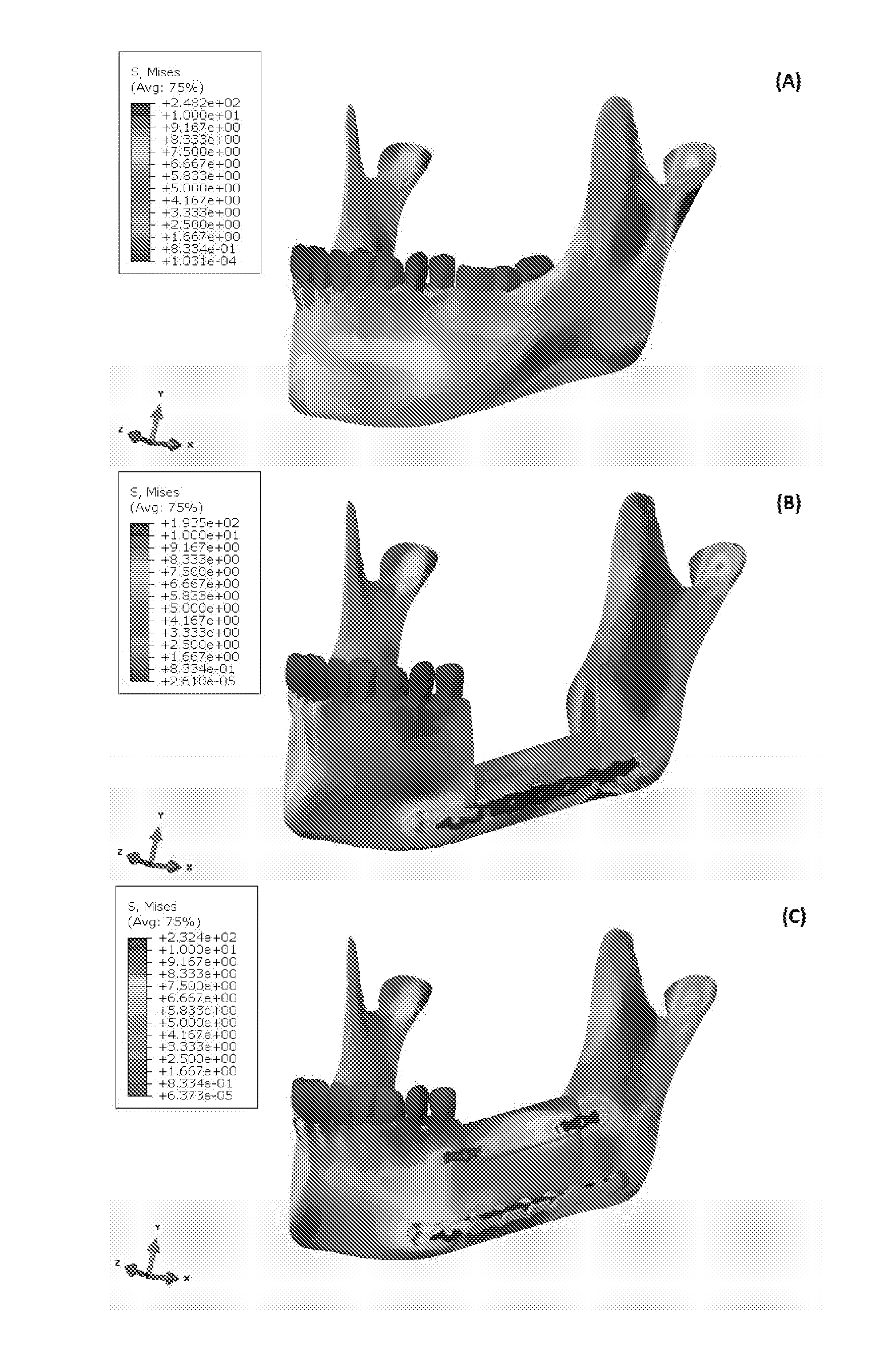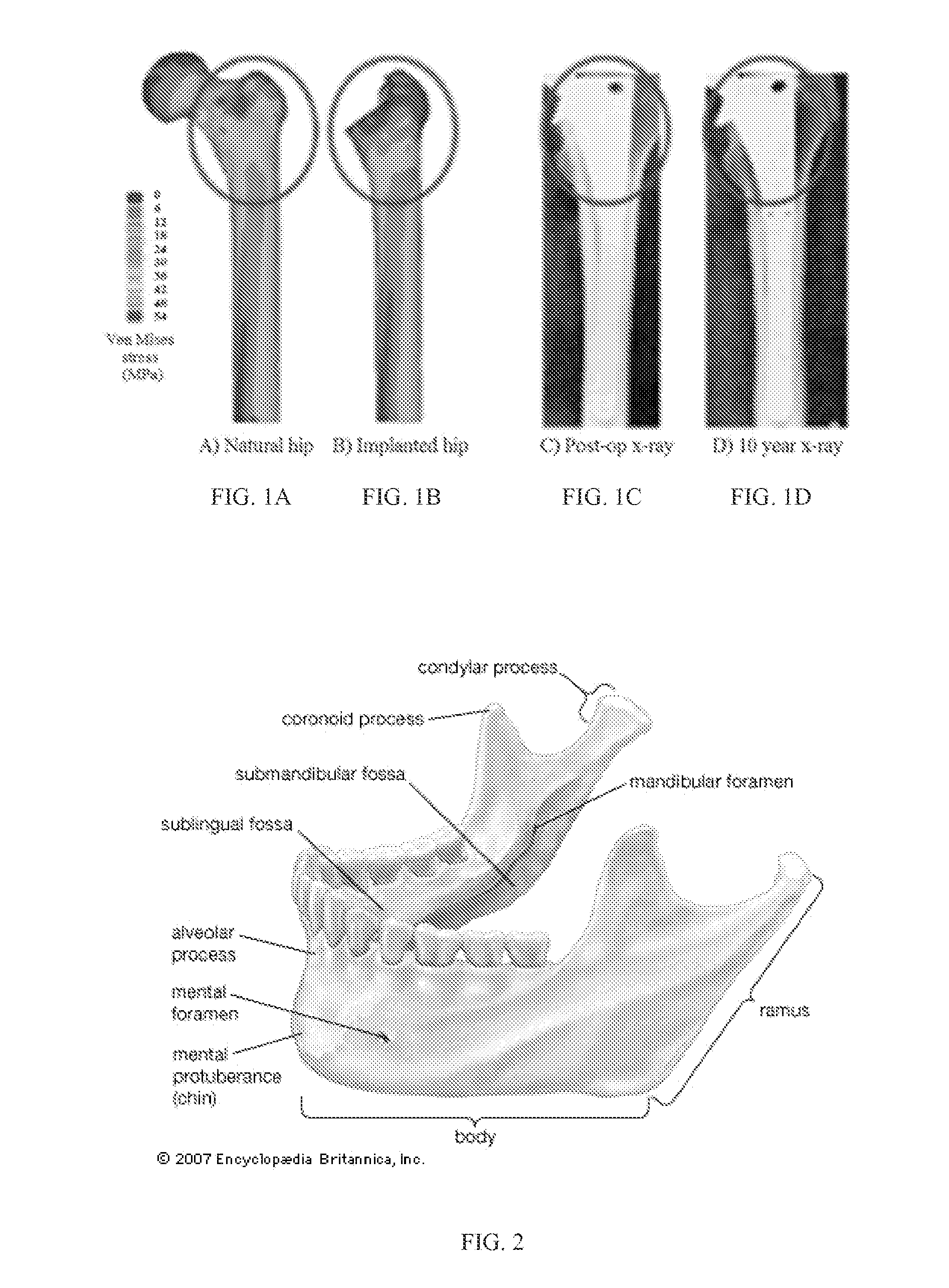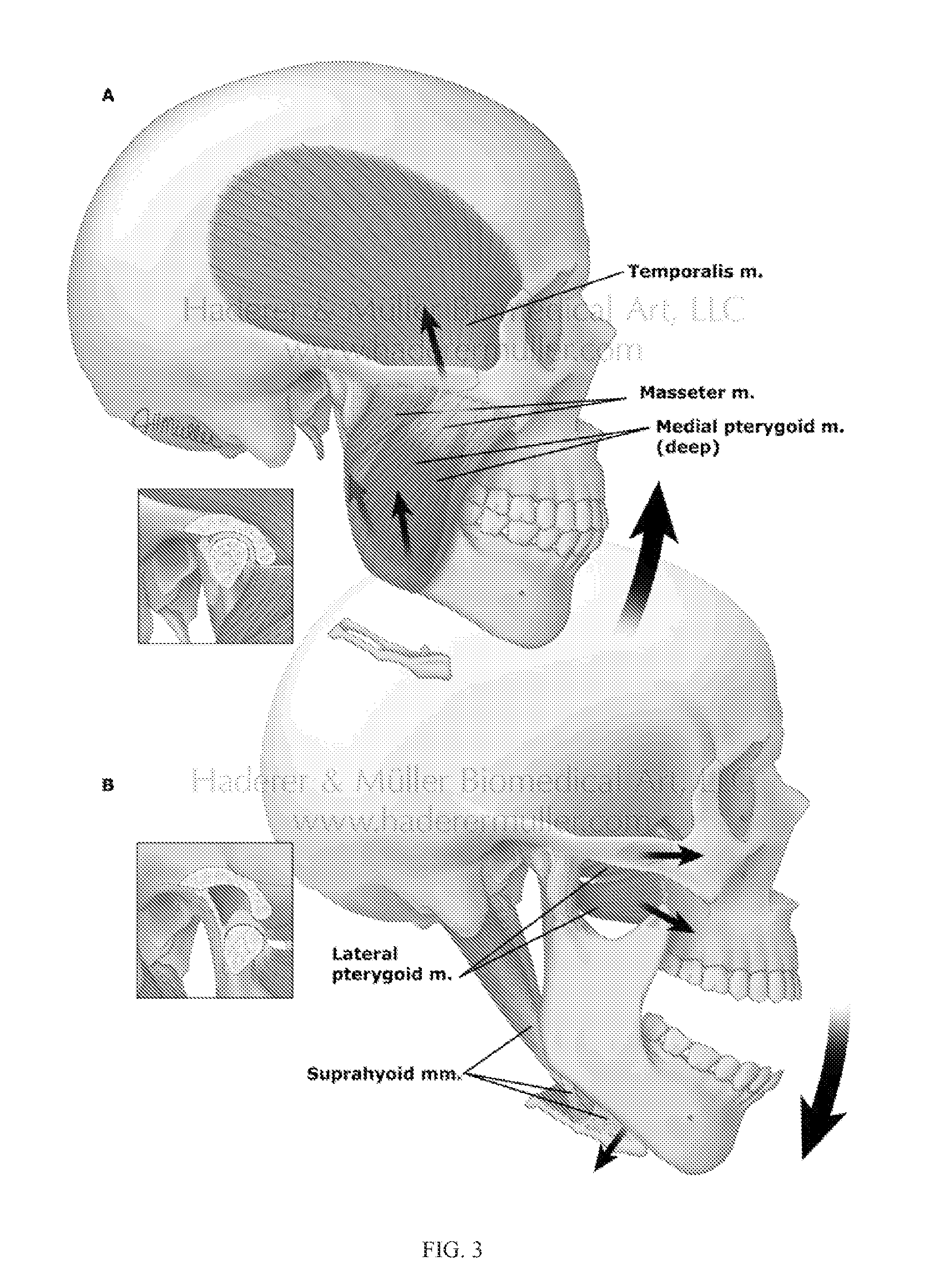Methods, devices, and manufacture of the devices for musculoskeletal reconstructive surgery
a technology for reconstructive surgery and musculoskeletal muscle, which is applied in the field of methods, devices, and manufacture of musculoskeletal reconstructive surgery, and can solve the problems of bone resection, tissue die-back as well as pain at the harvest site, and surgeons must be very careful in their use of grafted bon
- Summary
- Abstract
- Description
- Claims
- Application Information
AI Technical Summary
Benefits of technology
Problems solved by technology
Method used
Image
Examples
example
Patient Specific Implant Design: Geometry and Material Properties For Reconstruction of the Mandible
[0130]Tumor resection, trauma, and inflammation cause mandibular segmental defects (i.e., a complete segment is missing resulting in two separate parts), which may lead to airway obstruction, disfigurement, disturbance in speech and swallowing, and diminished masticatory ability. Reconstruction methods and techniques need to be applied to restore the mandible aesthetic and function, including repair of mandible continuity and muscles attachment. Despite all the progress in surgically treating this condition over the last 30-40 years, none of the current techniques meet all the needs to completely restore the shape and functionality of the lost bone over the long term (e.g., more than 10 years) (Abbas A., “Reconstruction skeleton for the lower human jaw using CAD / CAM / CAE,” Journal of King Saud University-Engineering Sciences, 24:159-64 (2012)). At present, the standard of care for a se...
PUM
 Login to View More
Login to View More Abstract
Description
Claims
Application Information
 Login to View More
Login to View More - R&D
- Intellectual Property
- Life Sciences
- Materials
- Tech Scout
- Unparalleled Data Quality
- Higher Quality Content
- 60% Fewer Hallucinations
Browse by: Latest US Patents, China's latest patents, Technical Efficacy Thesaurus, Application Domain, Technology Topic, Popular Technical Reports.
© 2025 PatSnap. All rights reserved.Legal|Privacy policy|Modern Slavery Act Transparency Statement|Sitemap|About US| Contact US: help@patsnap.com



